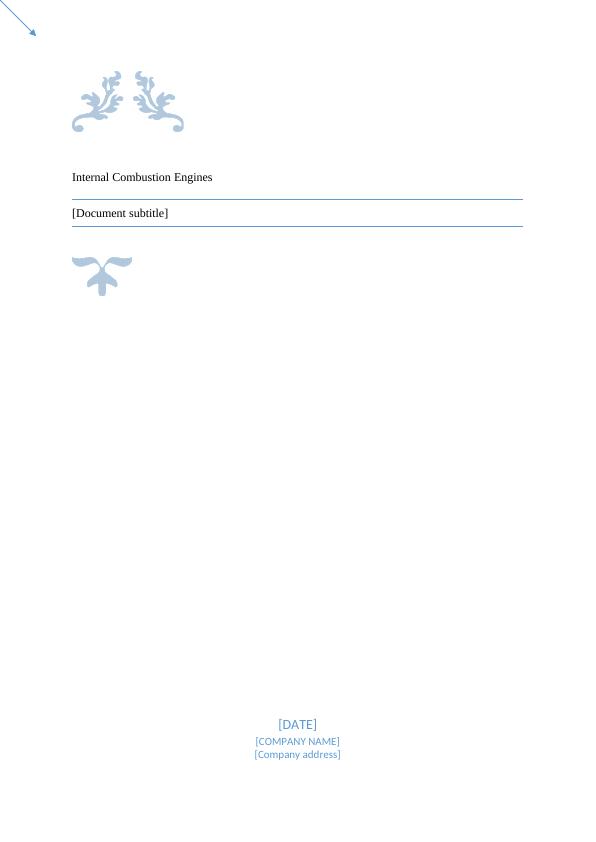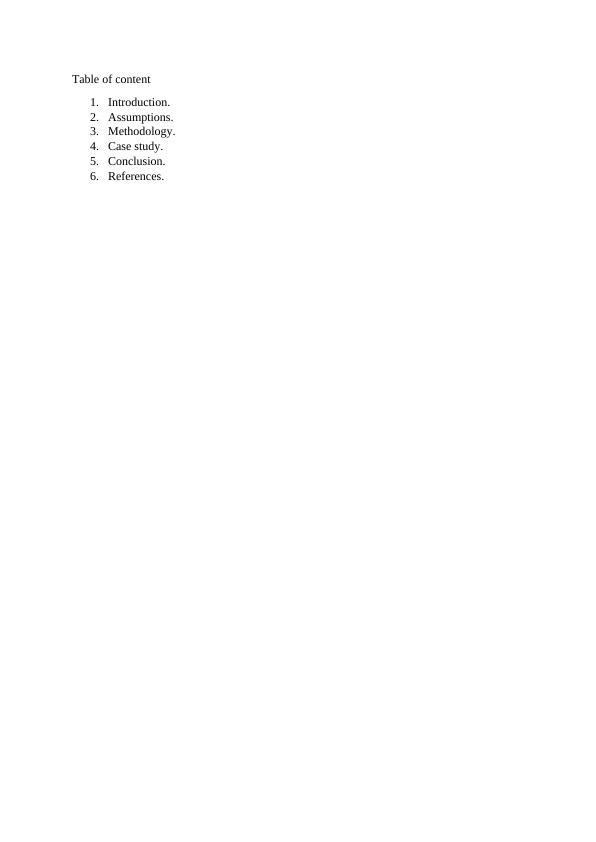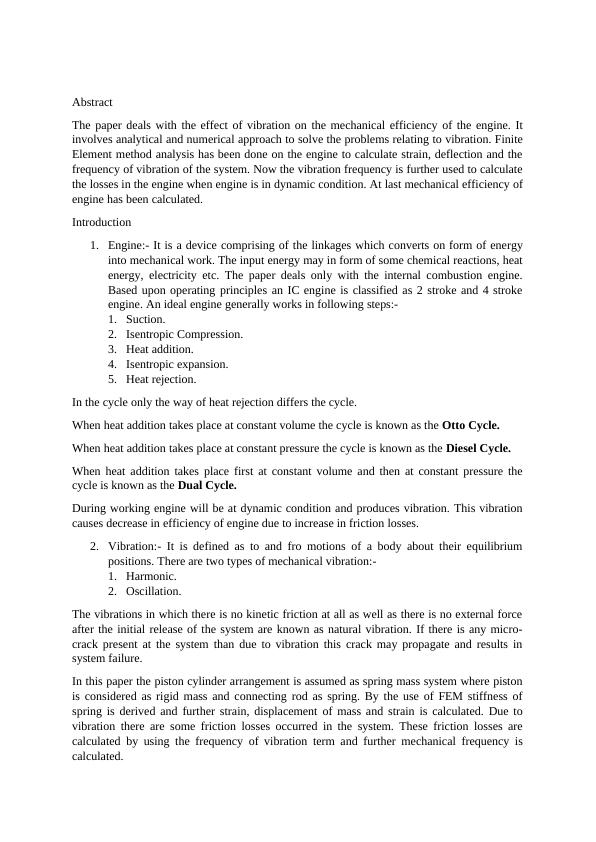Ask a question from expert
Introduction to Internal Combustion Engines
8 Pages1062 Words125 Views
Added on 2021-04-21
Introduction to Internal Combustion Engines
Added on 2021-04-21
BookmarkShareRelated Documents
Internal Combustion Engines[Document subtitle][DATE][COMPANY NAME][Company address]

Table of content1.Introduction.2.Assumptions.3.Methodology.4.Case study.5.Conclusion.6.References.

AbstractThe paper deals with the effect of vibration on the mechanical efficiency of the engine. Itinvolves analytical and numerical approach to solve the problems relating to vibration. FiniteElement method analysis has been done on the engine to calculate strain, deflection and thefrequency of vibration of the system. Now the vibration frequency is further used to calculatethe losses in the engine when engine is in dynamic condition. At last mechanical efficiency ofengine has been calculated.Introduction1.Engine:- It is a device comprising of the linkages which converts on form of energyinto mechanical work. The input energy may in form of some chemical reactions, heatenergy, electricity etc. The paper deals only with the internal combustion engine.Based upon operating principles an IC engine is classified as 2 stroke and 4 strokeengine. An ideal engine generally works in following steps:-1.Suction.2.Isentropic Compression.3.Heat addition.4.Isentropic expansion.5.Heat rejection.In the cycle only the way of heat rejection differs the cycle.When heat addition takes place at constant volume the cycle is known as the Otto Cycle.When heat addition takes place at constant pressure the cycle is known as the Diesel Cycle.When heat addition takes place first at constant volume and then at constant pressure thecycle is known as the Dual Cycle.During working engine will be at dynamic condition and produces vibration. This vibrationcauses decrease in efficiency of engine due to increase in friction losses.2.Vibration:- It is defined as to and fro motions of a body about their equilibriumpositions. There are two types of mechanical vibration:-1.Harmonic.2.Oscillation.The vibrations in which there is no kinetic friction at all as well as there is no external forceafter the initial release of the system are known as natural vibration. If there is any micro-crack present at the system than due to vibration this crack may propagate and results insystem failure.In this paper the piston cylinder arrangement is assumed as spring mass system where pistonis considered as rigid mass and connecting rod as spring. By the use of FEM stiffness ofspring is derived and further strain, displacement of mass and strain is calculated. Due tovibration there are some friction losses occurred in the system. These friction losses arecalculated by using the frequency of vibration term and further mechanical frequency iscalculated.

End of preview
Want to access all the pages? Upload your documents or become a member.
Related Documents
ENGG952 - Engineering Computinglg...
|8
|1467
|102